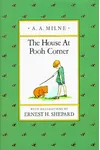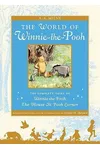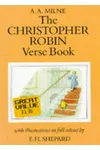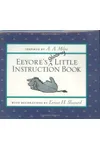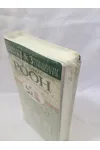Step into the enchanting Hundred Acre Wood, where a lovable bear named Winnie the Pooh and his quirky friends embark on heartwarming adventures! A. A. Milne’s timeless Winnie the Pooh series, a cornerstone of children’s literature, weaves gentle tales of friendship, curiosity, and simple joys that have captivated readers for nearly a century.
With its whimsical storytelling and cozy forest setting, this series invites readers of all ages to slow down and savor life’s small moments. Let’s wander through the origins, stories, and lasting charm of Pooh’s delightful world!
How Winnie the Pooh Began
In the 1920s, British author Alan Alexander Milne drew inspiration from his son, Christopher Robin, and his collection of stuffed animals to create the Winnie the Pooh series. The first book, Winnie-the-Pooh (1926), introduced the world to Pooh, Piglet, Eeyore, and friends, set in a fictional forest inspired by Ashdown Forest in England. Illustrated by E. H. Shepard, whose charming sketches brought the characters to life, the series began as bedtime stories for Christopher Robin, blossoming into a literary classic.
Milne, a playwright and humorist, infused the tales with warmth and subtle wit, capturing the innocence of childhood. A second book, The House at Pooh Corner (1928), followed, cementing the series’ place in children’s literature. The stories’ universal appeal lies in their simplicity and the relatable quirks of each character.
The Heart of Winnie the Pooh
The Winnie the Pooh series comprises two main books and additional poetry collections like When We Were Very Young (1924) and Now We Are Six (1927), which include Pooh-related poems. In Winnie-the-Pooh, readers follow Pooh, a honey-obsessed bear, as he navigates small adventures, like getting stuck in Rabbit’s burrow or hunting for a lost tail with Eeyore. The House at Pooh Corner introduces Tigger, the bouncy tiger, and explores deeper themes, such as Christopher Robin’s growth and farewell to childhood.
The series’ themes—friendship, kindness, and embracing life’s simple pleasures—resonate through its episodic, gentle narratives. The Hundred Acre Wood, a serene and timeless setting, feels like a safe haven where characters face everyday challenges with humor and heart. Milne’s playful prose, paired with Shepard’s iconic illustrations, creates a cozy, nostalgic tone that feels like a warm hug.
Each character embodies distinct traits: Pooh’s innocent optimism, Piglet’s timid bravery, Tigger’s boundless energy, and Eeyore’s melancholic charm. These personalities teach subtle lessons about acceptance and empathy, making the stories as meaningful for adults as for children.
Why Winnie the Pooh Resonates
Winnie the Pooh’s enduring appeal lies in its universal themes and emotional depth. The series has inspired countless adaptations, most notably Disney’s animated films and TV shows, which introduced Pooh to global audiences. Beyond entertainment, the books have influenced children’s literature by showing that simple stories can carry profound wisdom.
Fans cherish Pooh for its nostalgic charm and quotable lines, like Pooh’s musings on honey and friendship. The series’ cultural impact spans merchandise, theme park attractions, and even philosophical books, such as The Tao of Pooh, which explores its Zen-like wisdom. Nearly a century later, Pooh remains a symbol of kindness and wonder, reminding us to find joy in life’s small moments.
- First Published: 1926 (Winnie-the-Pooh)
- Main Books: 2 (Winnie-the-Pooh, The House at Pooh Corner)
- Setting: Hundred Acre Wood, inspired by Ashdown Forest
- Illustrator: E. H. Shepard
Ready to get lost in the Hundred Acre Wood? Grab Winnie-the-Pooh and join Pooh and friends for a heartwarming adventure in this timeless children’s classic!



